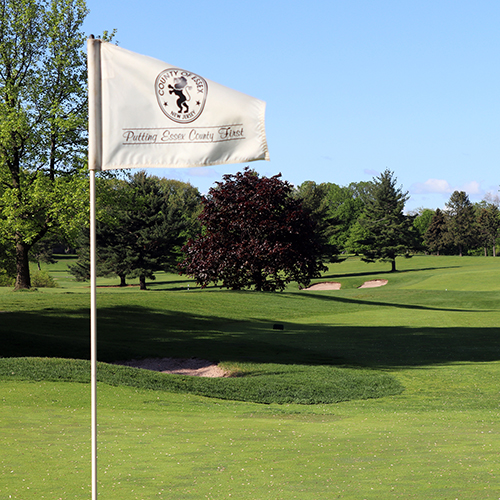The State Dinosaur of New Jersey

States have their own flags, their own birds, and even their own flowers, but what about a state dinosaur? Turns out that New Jersey has one!
The official New Jersey state dinosaur is the Hadrosaurus foulkii, discovered by William Foulke in 1858. Foulke was visiting his friend John E. Hopkins in Haddonfield, New Jersey when Hopkins told him a story of strange bones found 20 years earlier in a marl pit behind his home. With Hopkins' permission, Foulke and his friend Joseph Leidy discovered the nearly complete skeleton of the dinosaur.
Leidy brought the bones back to the Academy of Natural Sciences in Philadelphia, and from his research he discovered that the Hadrosaurus foulkii was a plant eater, weighed about seven to eight tons, and stood about 10 feet tall!
Soon after, the Hadrosaurus foulkii became the first dinosaur skeleton to be put on public display. In 1879, a copy of the dinosaur's skeleton was mounted at the Royal Scottish Museum in Edinburg, Scotland. It became the first dinosaur mount ever displayed in Europe.
In 1988, Joyce Berry and her fourth grade class at Strawbridge Elementary School in Haddonfield began a campaign to have the Hadrosaurus foulkii named the official New Jersey state dinosaur. In 1991, their hard work finally paid off.
On June 13, 1991, then New Jersey Governor Jim Florio signed a law making Hadrosaurus foulkii the official state dinosaur. At the time, New Jersey became only the tenth state to have an official dinosaur.
Today, the original bones of the Hadrosaurus folkii remain at the Philadelphia Academy of Natural Sciences, where Leidy first studied them over 100 years ago. A replica of the dinosaur is still exhibited at the museum, where New Jerseyans can see their state dinosaur up close and personal.



